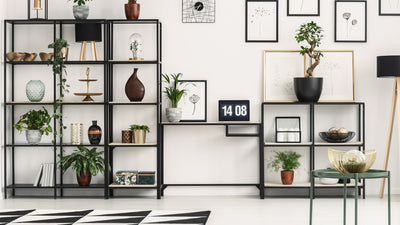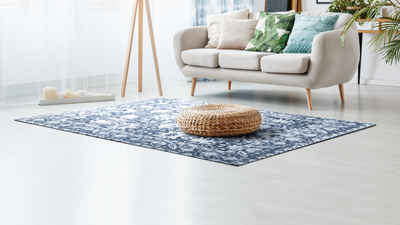The Complete Guide to Minimalist Interior Design
Are you tired of being surrounded by mess? Do you wish you could just simplify your life? Then you might be interested in minimalism. Although popularised in recent years by influencers such as The Minimalists and Marie Kondo, this movement can be seen throughout history in architecture and interior design. Minimalist interior design can help you make sense of your space, create a welcoming feel with just a few pieces, and help you live your daily life clutter free.
Minimalism Defined
The minimalist interior design style is about using the simplest and fewest elements for maximum effect. There are many different ways you can define minimalism, but they each share this core idea.

Minimalist style goes back as far as the 1950s. It began as an aesthetic style that gradually morphed into a variety of different ideas. It is at once an artistic and cultural movement that is focused on the true essence of materials and objects, practicality and simplicity.
The minimalist lifestyle is about focus, identifying the bare essentials and eliminating the rest. While minimalism is not the only way we can organise our life, it has definitely become one of the most popular methods.
What is Minimalist Interior Design Style
Minimalist interior design is focused on removing clutter, using minimal decoration, and using the fewest elements possible to create an uncluttered space. Everything in a minimalist designed space has a function: to provide seating, warmth, storage or a sense of balance. The empty space gives you a chance to appreciate key elements of your home and architecture and relax your mind after a full day of work and play. The minimalist design aesthetic is perfect for all kinds of homes, whether you prefer large open rooms or small spaces.
While this style can seem restrictive, a minimalist home doesn’t have to be completely bare. It just means that what you choose for your home, right down to the art on the walls, is deliberately chosen for a specific purpose. This style is less about the absence of stuff, and more about surrounding yourself with what matters.
Defining Features of Minimalist Interior Design
Monochromatic/neutral colour palette
A monochromatic colour palette includes all the shades, tones and tints of a single hue (aka colour). Greyscale is a type of monochromatic palette that uses only shades of grey, black and white. Neutral colours are hues that have been desaturated or muted to produce a soft, quiet colour. A minimalist home may use a monochromatic/neutral colour palette with different shades to create a calm, visually consistent room.
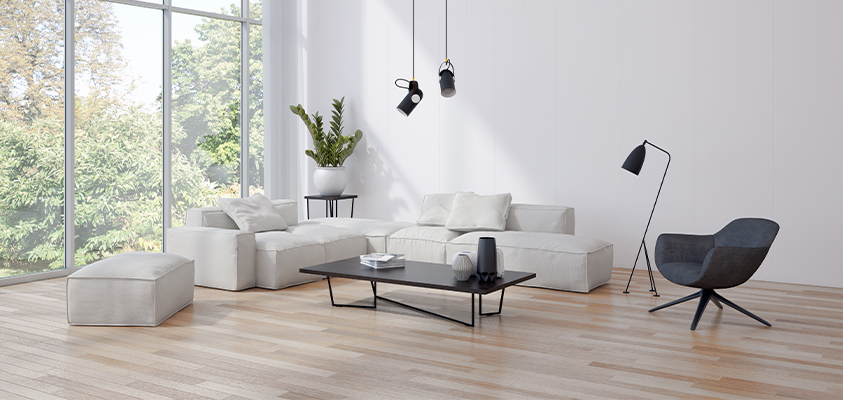
Open floor plan
An open floor plan combines two or more traditionally separate but related rooms (often the kitchen, dining and living room). They make your interior feel larger and you’ll have more square footage thanks to fewer walls. You’ll be able to see your whole space, making it easy to keep an eye on smaller family members or interact with guests. Best of all, with the right windows, light can reach every inch of your home.
Plenty of light
Your minimalist home should have as few artificial lights as possible. Get as many windows as possible - these will not only let in natural light but also make the space feel larger and less constrictive. You can also use mirrors or other reflective surfaces to bounce light around the room.
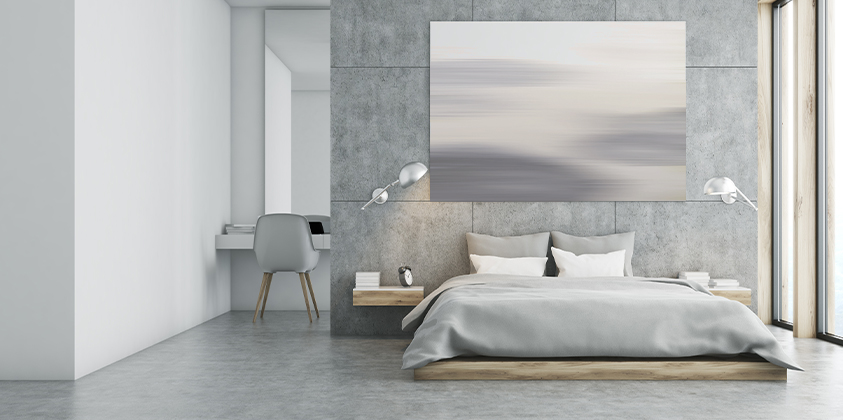
Clean lines
Minimalist designs are characterised by simple shapes with clean, straight lines. They provide symmetry and balance to a space and emphasise the essence of an item. These are a traditional staple of minimalist interior design, though modern minimalist interiors may also use soft edges and curves for extra comfort.
Minimal decoration
We don’t just mean your favourite knick knacks. Decorative moulding and flourishes are few and far between. Accessories like rugs, lamps, vases and trinket trays should serve a functional purpose. Of course, don’t be afraid to hold onto your favourite accessories - anything that you consider essential to your personality should stay put, and you can even make them a focal point of your room.
Why is Minimalist Design so Popular?
Sustainability
With concerns over climate change and the environment at an all-time high, living minimally is just one way we can help reduce our carbon footprint. For starters, you’ll be buying less, which reduces demand for products and saves future purchases from going to landfill. Secondly, minimalist pieces will often use natural materials over synthetic, meaning less greenhouse gas emissions from plastic production.
Saving money
Minimalism is your bank account’s best friend. You’ll be less likely to accidentally double up your groceries since you know everything that’s in your home. Since you’re not focused on buying stuff, you’ll be less tempted to impulse spend. Less stuff means less laundry, fewer dishes and less cleaning, so you might even save on water and electricity.
Focusing on what’s important
We live in a world of information overload. We are overwhelmed by stuff, whether it’s physical clutter or digital clutter, and it’s affecting our mental health. Minimalism (both the design and lifestyle) is attractive because it strips back our lives to the bare essentials, and forces us to reflect on our life goals and what we consider important, whether that’s friends, family, financial security, or self-fulfillment.
Examples of Minimalist Interior Design
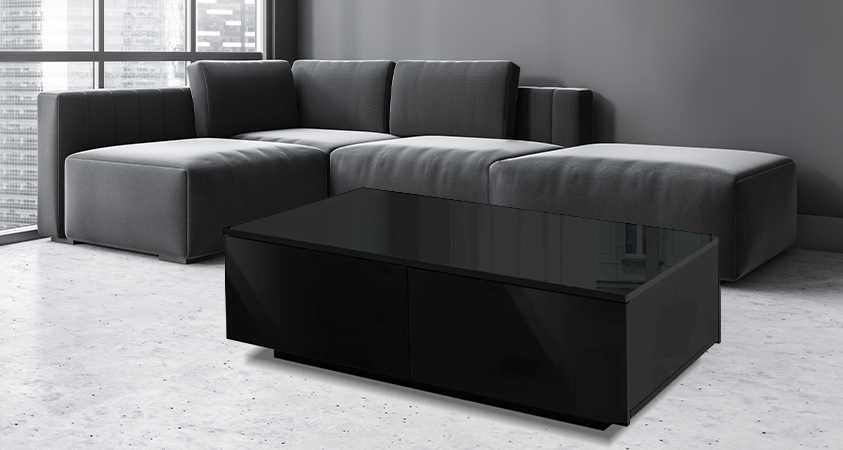
Minimalist Living Room
The core purpose of a living room is to be a comfortable place to relax, gather and entertain. A minimalist living room needs to strike the right balance between simplicity and comfort. Don’t leave your room completely empty - start with a focal point and build your setting around it. Try to use a mix of small and large furnishings, various textures and materials, and a warm inviting colour palette. Use hidden storage to keep your extra blankets, pillows, and other clutter. This might take the form of a storage bench, a sofa with built-in storage, or a generous coffee table. Use floating shelves to display your decor and fill your walls. If you have an airy open plan, you may also want to create zones in your living room to differentiate your space and give a sense of privacy.
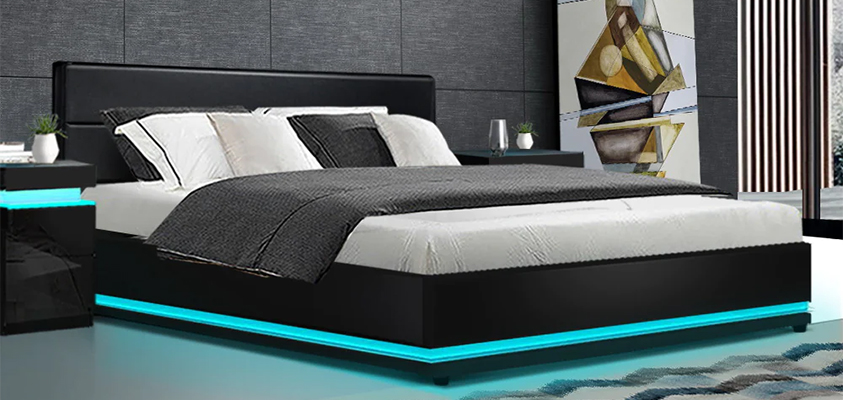
Minimalist Bedroom
The perfect minimalist bedroom has plenty of access to natural lighting. Our bodies use it to regulate our circadian rhythm and help us sleep, so you’ll want a wide window and plenty of sun exposure. Add warmth to the room by playing with texture. Top your cotton bedsheets with an extra fluffy throw blanket. Instead of framed artwork, hang a tapestry above your bed. You can even find linen wallpaper in neutral colours for extra warmth. Make the most of your bed space by getting a bed with built-in shelving, unobtrusive drawers, or an easily accessible gas lift storage compartment. Finally, don’t be afraid to personalise. You should feel the most relaxed in your bedroom, which may mean surrounding yourself with comfortable objects. Incorporate your favourite items and accessories into the decor, and you’ll be guaranteed a great night’s sleep.
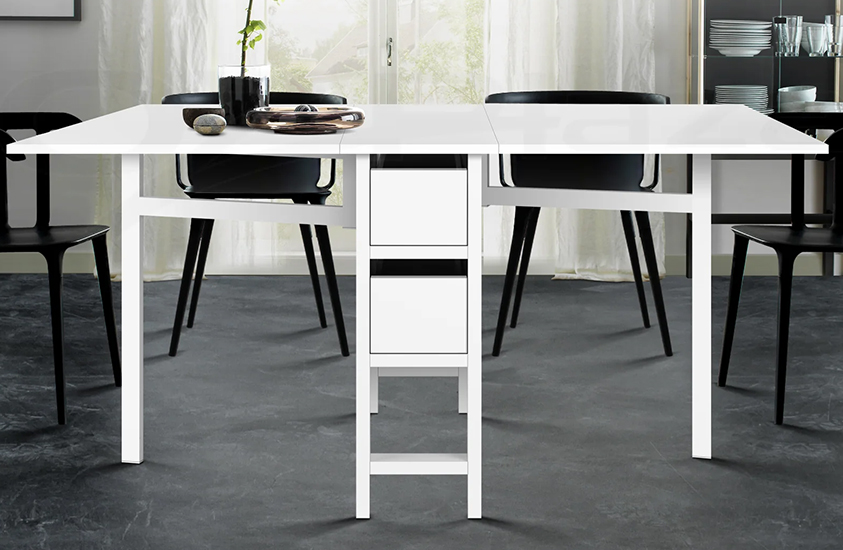
Minimalist Dining Room
The dining room is a pivotal point of the home, where friends and family gather for nights of fun and frivolity. A minimalist dining room should not only be welcoming, but visually interesting. It may seem counterintuitive, but a gallery wall is a great counter to bare white walls. It helps balance the space, brings some personality to your wall, differentiates the space, and provides a great icebreaker for guests. A well-placed pendant light suspended from the ceiling will provide plenty of mood lighting to enjoy your dinner. For a space-saving dining table, the Artiss Gateleg table can be shortened or extended to fit your exact space needs. Finally, a minimalist buffet or sideboard is the perfect furniture piece for entertaining. Store everything from crockery to board games in their generous cupboards, so you’re ready to wine and dine at a moment’s notice.
Minimalist style FAQ
How do you make a minimalist space cozy?
There are plenty of ways to soften your space without compromising your minimalist design style.
-
Break up clean lines with the occasional curve. You can accomplish this with a round throw pillow, coffee table or rug, or incorporate them into artwork.
-
Include some green elements such as a succulent or hanging plant. These provide a pop of colour and life to a bare room.
-
Mix textures and materials. Give your linen couch a fluffy throw blanket, a velvet ottoman, or perhaps a fleecy carpet underfoot.
-
Don’t forget to add something personal. Minimalist spaces aren’t meant to be completely sterile. Elements of your personality will shine through and brighten up the space, no matter what kind of interior style you have.

Is minimalist interior design costly to produce?
While minimalism is likely to save you money over time, there can be upfront costs. If you declutter too many "just in case" items, you might find yourself replacing them down the line. If you’re choosing to completely redesign your home, you then have the cost of remodelling, repainting and choosing all new furniture. Then there's the abundance of organisation tools, storage containers, labelling systems and other products to help you achieve that #instagrammable pantry, bathroom or laundry.
How to avoid overspending when going minimalist:
-
Instead of throwing away your excess, try to sell it online.
-
Find a local ‘buy nothing’ group and trade your furniture/belongings for something to suit your new style.
-
Give your existing furniture a minimalist makeover.
-
Avoid hiring a professional organiser.
-
Use hidden storage to pack away seasonal or special occasion items.
-
Use your new reusable container collection to buy from bulk food stores.
-
Find affordable furniture pieces that have minimalist-style finishes but are made from composite woods such as plywood or particleboard, or even plastic.
What is the opposite of minimalist interior design?
Maximalism is a design style that celebrates the little things. Where minimalism says “less is more”, maximalism says “more is more”. It is an aesthetic of excess that celebrates where life has taken you and every little thing you’ve picked up along the way. It is about loudly and proudly expressing your unique personality and encourages over-the-top decor, from bold colours and patterns to elaborate furnishings. While a maximalist space isn’t necessarily cluttered, there are few surfaces left undecorated. If you’re a fan of the Art Deco or Hollywood Glamour era, then you’ll love maximalism.








